Beyond the shores of the mainland, across the choppy Atlantic and North Sea, are some of Britain’s greatest wildlands. The windswept and remote islands of Scotland tick all of the boxes when it comes to adventure away from the tourist trail. Scotland has more than 1,000 islands to choose from, so if you don’t know where to start, here are some of our favourites.
When is the best time to visit Scotland?
July and August are the busiest months. With blooming flowers from April and blankets of purple heather around September, spring and autumn are the most magical times to visit. If you opt for summer, make sure you’re fully armoured against the midges. Windy areas like the coast are best for dodging them.
Weather in Scotland
Getting caught in the rain is part of the Scottish experience, and it’s what makes the landscapes so verdant and wild. You can ski in winter and sunbathe in summer, but even in the driest months of April and May, waterproofs are still essential. In the Scottish Highlands and islands, January sees the most rainfall, with daytime temperatures averaging between –2°C (28°F) and 5°C (41°F). Although winter brings the coldest and wettest days, it’s an incredible time to see the northern lights. Spring daytime temperatures usually range from 8°C (46°F) to 13°C (55°F), warming up to about 15°C (59°F) to 18°C (64°F) in summer. Pleasant temperatures linger into autumn, with an average of 15°C (59°F) through September and October.
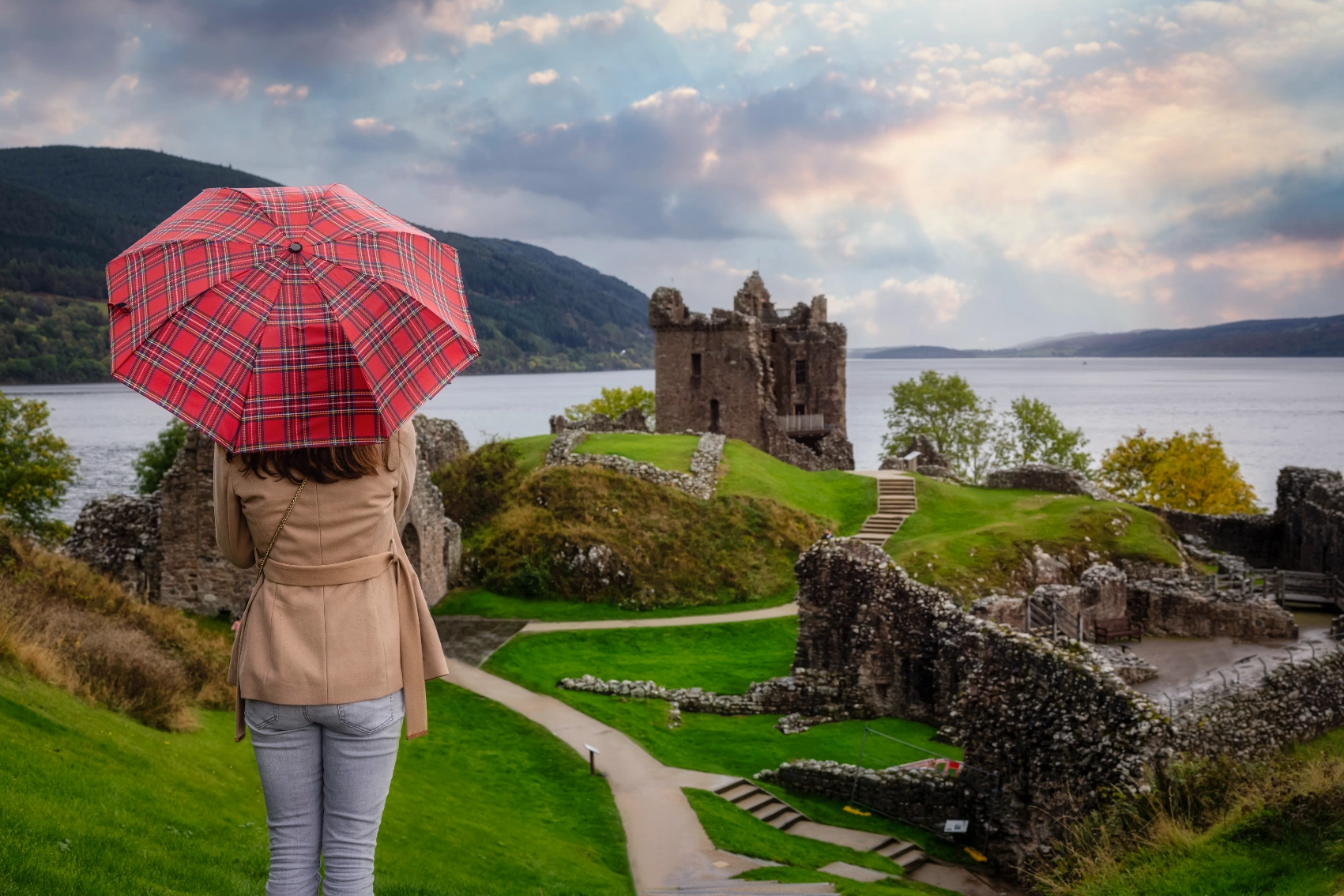
Scottish wildlife
If it's your mission to spot just one animal in Scotland, make it the majestic lop-sided wild haggis. Locals usually know where to find these elusive hill dwellers, so don’t be shy about asking around. Jokes aside, each season in Scotland brings something new, including puffins, dolphins, beavers, and mountain hares in spring. Turn your attention to the sea in summer for basking sharks, fluffy white seal pups, otters, and minke whales, plus golden eagles overhead. Rutting season for red deer is in autumn, and the rivers flow with leaping Atlantic salmon.
Visiting islands in Scotland
Shetland, Orkney, and the Hebrides: the untamed natural beauty, rich culture, and magic of the mainland have been distilled into these three main archipelagos of Scotland. While they’re grouped by proximity, each island has a distinct flavour.
Shetland Islands
Scattered in the North Sea almost halfway to Norway, are more than 100 islands belonging to the Shetland archipelago. Lively night skies of purple and green from the aurora borealis aren’t the only thing it shares with Scandinavia. Echoes of Shetland's Norse roots can be seen in the place names, cultural festivals, archaeological sites, and local crafts. Water is central to life in this part of the country, home to more than 1,500 lochs and close to 2,735km (1,700 mi) of coastline. That's especially evident in the cuisine — herring, mackerel, salmon, and mussels are staples. Explore by kayak, sailboat, or scuba diving, and if you’re lucky, you might see orcas, otters, and dolphins.
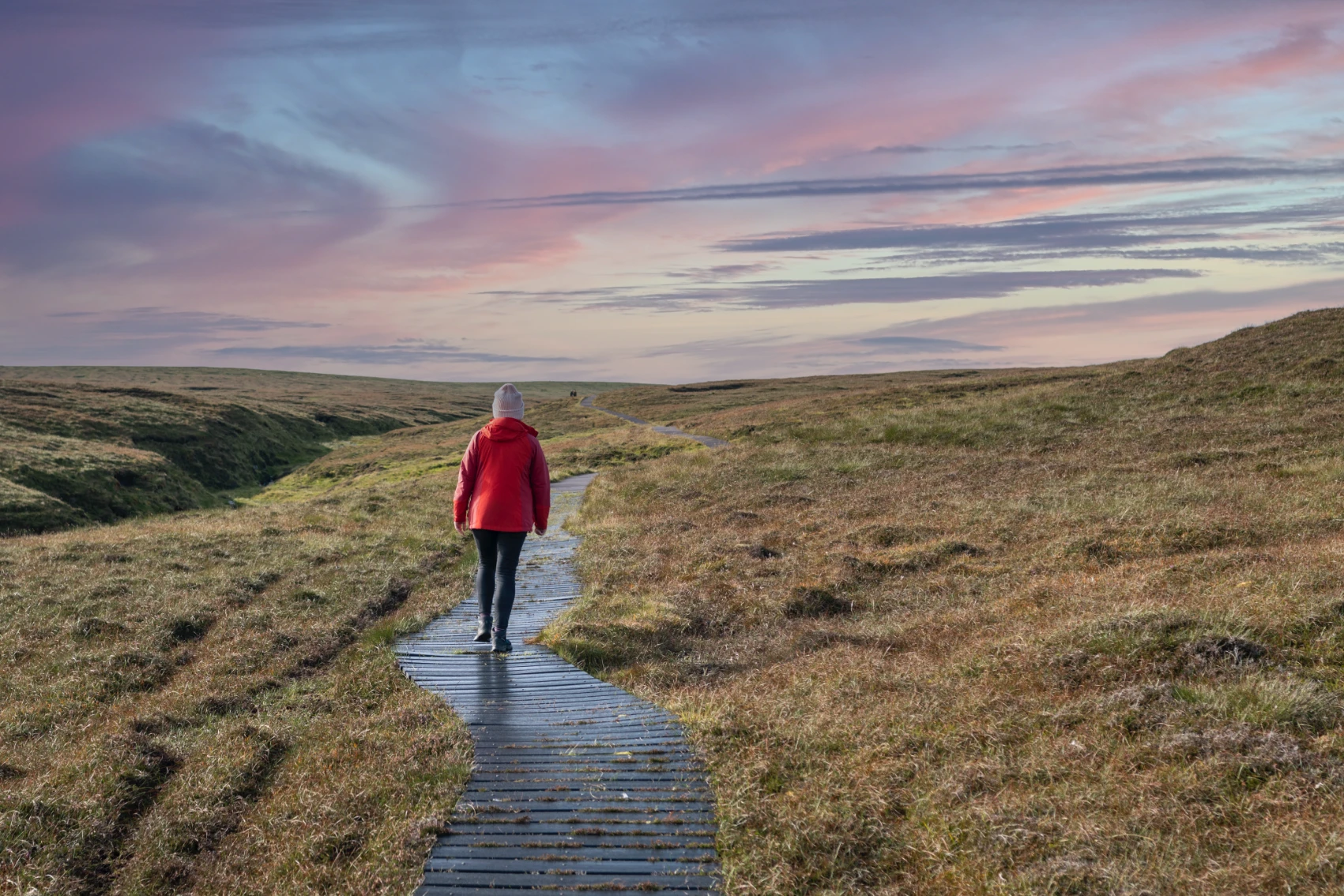
Experience it on: In the Wake of the Vikings: Orkney, Shetland & the Faroe Islands
Orkney Islands
Catch a ferry from the northern Highlands and watch as 5,000 years of history emerge through the misty salt spray and low clouds. Orkney’s cluster of 70 islands lies just 16km (10 mi) off the Scottish coast. More than a quarter of the islands are inhabited, some since 6500 BC. The oldest structures that remain include Neolithic farming settlements and a standing stone circle that predates Stonehenge. Returning to the present day, the towns of Kirkwall and Stromness are full of life, with a contemporary yet traditional creative scene. Away from the bustle, discover blushing red sea cliffs and vast stretches of empty, sandy beaches.
Experience it for yourself on: Expedition Through the Scottish Isles: Where Land Meets Legend
Inner Hebrides
Just off the west coast of Scotland, the Inner Hebrides are the easiest islands to reach and have some of the most dramatic landscapes. It’s a place for world-class whisky, ancient landmarks, and art inspired by rugged natural surroundings.
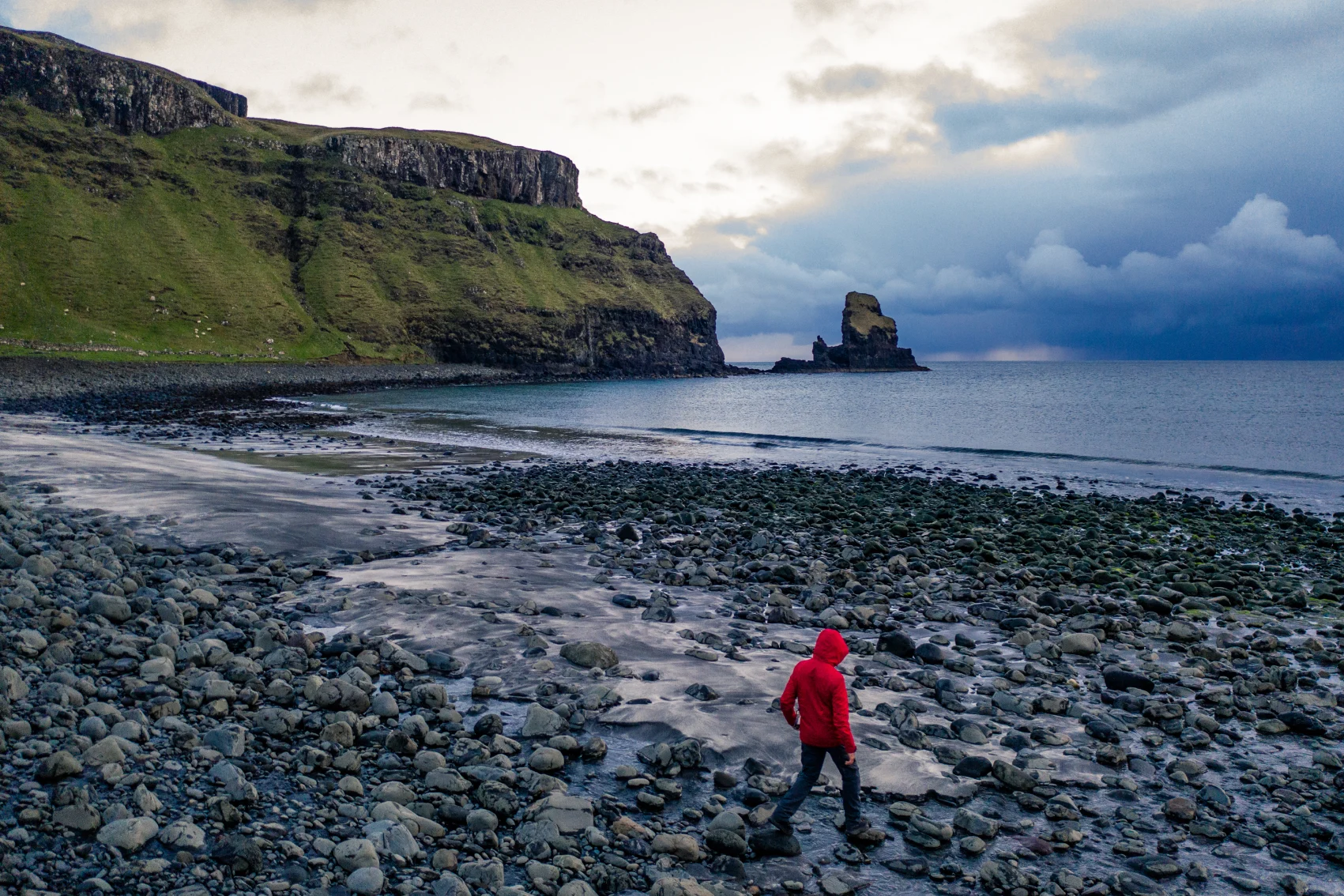
Small Isles
Eigg, Rum, Muck, and the Isle of Canna collectively form the Small Isles. Rum is a 105-sq-km (40-sq-mi) nature reserve and wildlife haven stretching from 812m-high (2,664 ft) mountain peaks down to deep valleys filled with heaths, sea cliffs, and beaches. While you walk the scenic trails, keep an eye out for otters bathing on the beach and seals in Kinloch, plus red deer in Kilmory. Neighbouring eco-island Eigg is ideal for green travel – running on 90% of its own renewable energy, home to sustainable businesses and organic farms, plus community-led conservation efforts. National Trust-protected Canna is a peaceful place for coastal trails dotted with history, such as the National Trust Puffin Walk. Muck is the smallest and the most serene, and it's great for snorkelling and canoeing.
Isle of Skye
Connected to the Scottish mainland by a bridge, the Misty Isle is a popular spot for a taste of the Hebrides. Above the capital, Portree, slicing skyward through the wide-open landscape formed by ancient glaciers, is the Old Man of Storr, a distinct, sharp, rocky pinnacle. Keep heading north for powerful waterfalls and to walk in the footsteps of dinosaurs at An Corran beach. In the south, the Cuillin Mountains challenge experienced climbers with the hardest traverse in the UK.
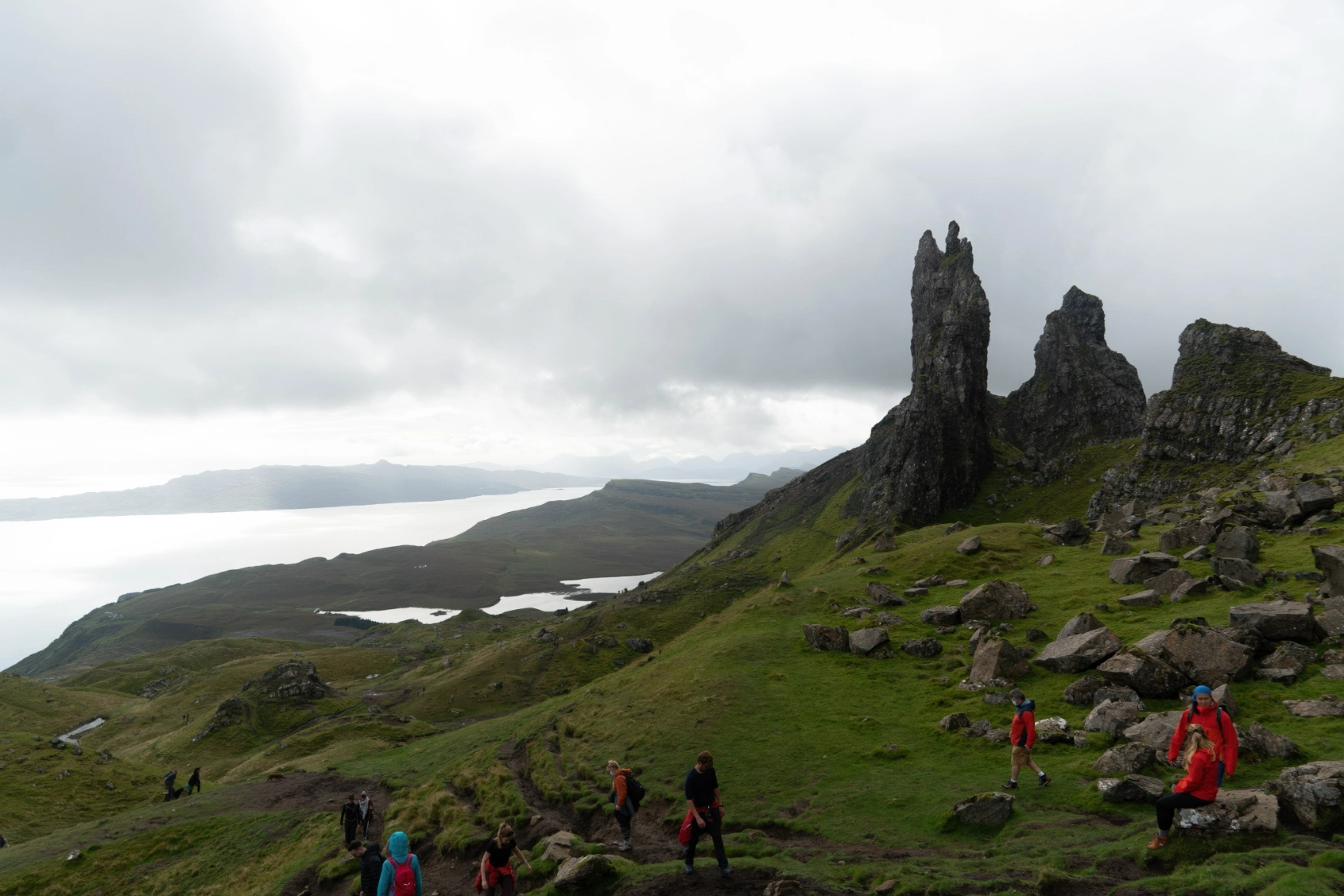
Experience it for yourself on: Highlights of Scotland
Isle of Mull
Amble through the rocky geometric columns of the Carsaig Arches for a glimpse into the past when the island was formed about 60 million years ago. Hit the 966m-high (3,169 ft) summit of Ben More for 360-degree views of this lava-formed landmass and the glistening sea around it. Satisfy your hunger pangs with some seafood at the colourful coastal town of Tobermory. Close to here is Salen Bay, where salt-weathered shipwrecks have been abandoned since the 1970s.
Staffa
On approach, you're met with views of towering black basalt cliffs smashed by surging Atlantic waves at Final’s Cave, a place that has inspired artists and tales of legend. While it’s said to be the home of giants, the only inhabitants on Staffa are short, cute, and curious. Living on the grassy plateau blanketed with purple bluebells in spring are waddling puffins. Follow the walking trails around this nature reserve, and you’ll soon realize that you’re outnumbered by these hill-burrowing sea parrots.
Iona
Arriving on Iona, take a deep breath in and soak up the unmatched sense of calm radiating from this sacred place. Pilgrims have journeyed to this 4.8km-long (3 mi) island dubbed Scotland’s "Cradle of Christianity" for 1,500 years after Irish monk St. Columba founded a monastery here in 563 AD. Only residents can bring cars onto the island, so you have to slow down while exploring on foot or by bicycle. Hidden away from view at the top of Dùn Ì hill is a natural pool known as the Well of Eternal Youth. Give your face a splash with some water because, according to Celtic myth, it was blessed to bring healing and renewal.
Experience it for yourself on: Expedition Through the Scottish Isles: Where Land Meets Legend
Colonsay and Oronsay
Up for a fun challenge? While you might’ve heard of a Munro — a Scottish mountain that's at least 914m (3,000 ft) high — it’s unlikely you’re familiar with MacPhies, hills more than 90m (295 ft) tall. In one 32km (20 mi) hike, you can bag all 22 MacPhies on Colonsay and Oronsay. All but one are on Colonsay, so for the final stint, you need to cross the walkable stretch of sand connecting the two islands, revealed only at low tide. Finish at the isolated ruins of a 14th-century priory and celebrate with a glass of locally distilled gin. If you’re craving another activity day, then surf some Atlantic waves at Kiloran Beach or visit the 200-year-old golf course.
Jura
Moody and mysterious, Jura lures with its dark beauty. Surrounded by rocky coastline and low-lying moorland, the three abrupt peaks stretch towards the clouds. You’ll be above the swooping golden eagles at the highest 785m (2,575 ft) summit of the Paps of Jura. It’s a landscape that sparked creative inspiration for author George Orwell as he pencilled his greatest success, 1984. At the opposite end of the island to the Jura Distillery, you might hear a mysterious whooshing noise coming from the sea. Catch a boat to get up close to the churning whitewater of the third biggest permanent whirlpool on Earth, Corryvreckan Whirlpool.
Isle of Arran
Arran gets a lot of attention, and it’s easy to see why. Travellers can find a bit of everything here. To the north are rugged mountain peaks, waterfall swimming spots, and gentle forested valleys for every level of hiking ability. Cyclists can soak it all in on the 90km (56 mi) coastal road, while ancient stone circles offer a dose of history. With all the family-run eateries, artisan shops, and handmade craft shops, you can easily indulge in local treats.
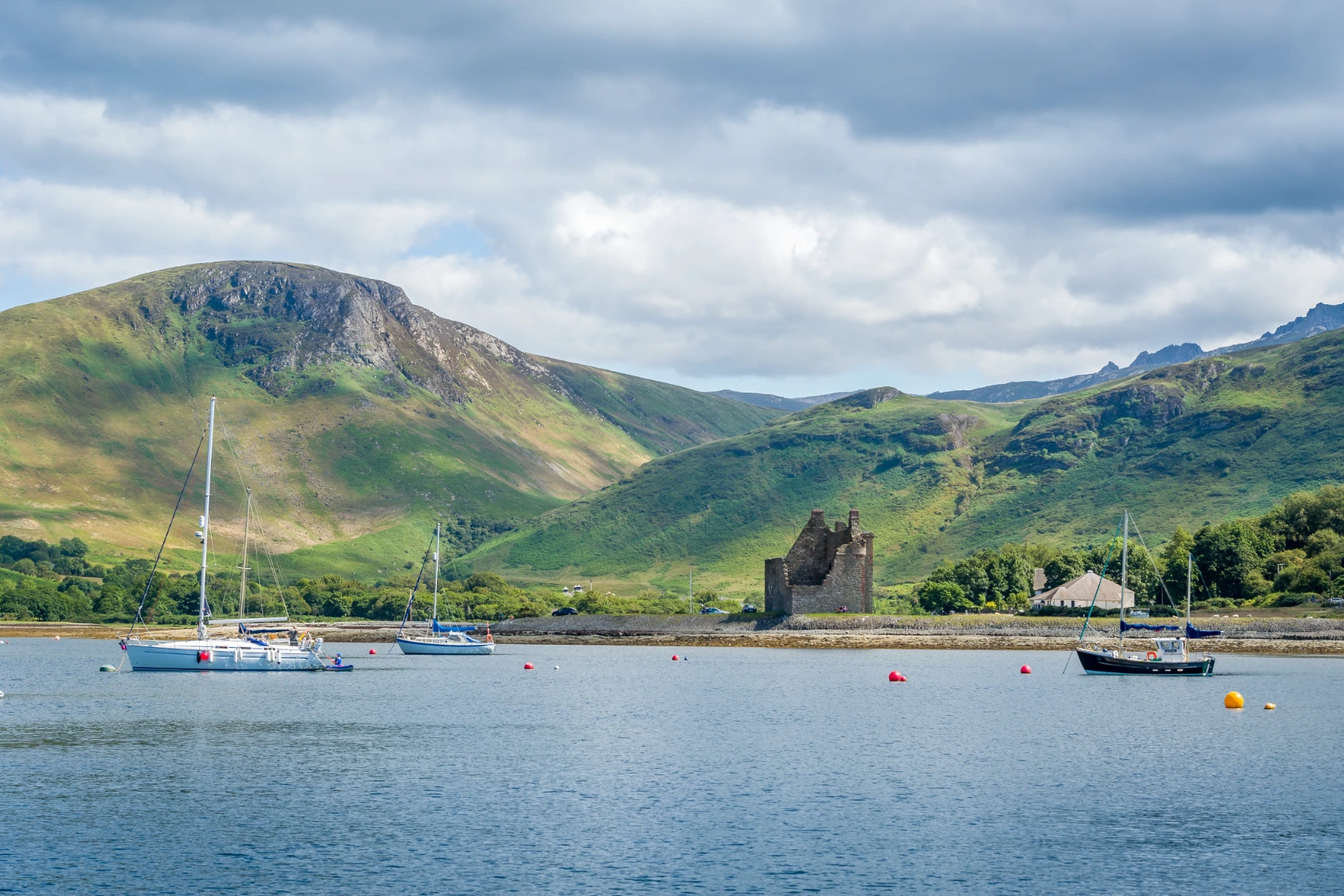
Islay
Pronounced "eye-la," this island is overflowing with fresh seafood and smoky whisky straight from the cask. Sip your way around the nine distilleries and stop by the sweet Scottish towns to find cozy whisky bars. If you wake up with a sore head, some peace and quiet can be found at the island’s hidden coves. On the other hand, in late August to September, you can hear the monotone symphony of thousands of honking geese arriving at the RSPB Loch Gruinart Reserve after their migration from Greenland.
Outer Hebrides
Forming the outer curve of the Hebrides and the westernmost area of Scotland, these Atlantic islands feel like the edge of the world. Expect to set foot on the most immaculate beaches in the UK, with porcelain shores of the same league as those in the Caribbean.
Lewis and Harris
Strip off and go for a dip — it’s worth braving the chill. Clear blue water laps ashore the soft white beaches covering the edges of this island with hazy, distant mountains as a backdrop. Among the lochs and seabirds grazing on the wetlands are the majestic Neolithic-era Calanais Standing Stones that are steeped in myth. The landscape grows taller as you move south, with hills and peaks separating remote villages where Harris Tweed weavers are busy at their looms.
Uist
This chain of three islands is linked north to south by 87km (54 mi) of single-track roads and sea-slicing causeways. Stay up after watching the sunset over the Atlantic from the west coast’s endless white sandy beaches. The dark skies over Uist are prime stargazing territory, and at the right time of year, you can see the northern lights, too. North Uist’s low-lying, loch-laced landscape is sprinkled with nature reserves, family-run cafés, and creative spaces, including an arts centre. Below is the stepping stone to the south, the Isle of Benbecula, where golden eagles and short-eared owls linger around the eastern lochs and lochans. It’s more mountainous in South Uist, making it ideal for hill walking and elevated views across the islands. The tallest peak sits at 620m (2,034 ft).
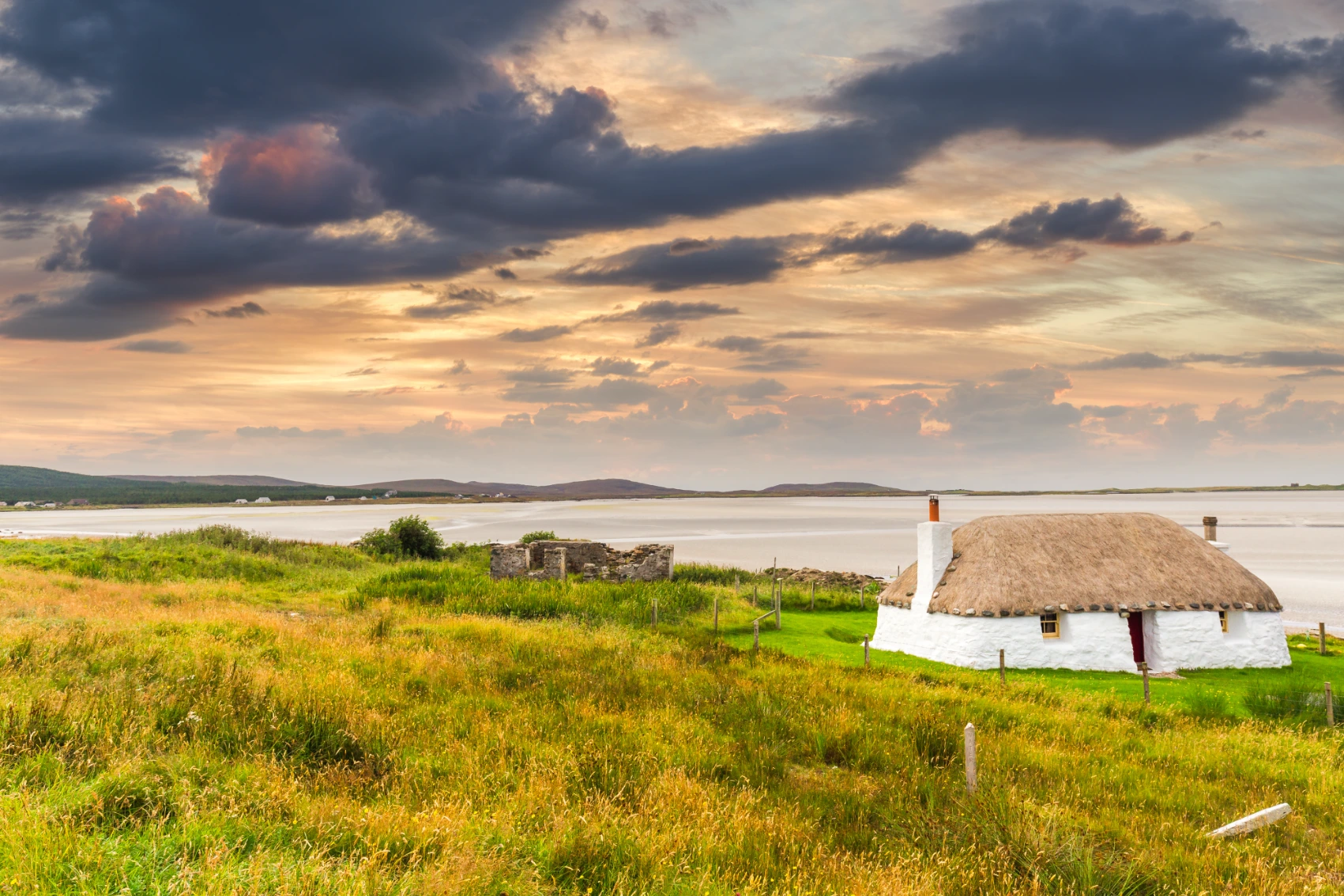
Eriskay
Take the causeway from North Uist to see this 4.8km-long (3 mi), free-roaming pony wonderland. Although it’s small, it brims with understated beauty, tradition, and folklore. On a clear day in the waters around Eriskay, you can see the kelp-covered remains of the gale-grounded SS Politician cargo ship. Pull up a chair in the only pub on the island to hear tales of the treasure found onboard before it sank 30m (98 ft) below the waves — in the form of 260,000 whisky bottles, stolen in the night.
Barra
Barra charms with its unexpected quirks. Arriving by plane? From above, you can make out the island’s turtle-like shape, with a shell outlined by the coastal ring road. Stay calm if you can’t see anywhere to land — touchdown is on the only scheduled beach runway in the world. It’s also home to the rare, low-lying grassy Machair habitat. From May to July, Barra blooms with a mosaic of wildflowers, glowing with red clover, pink Hebridean spotted orchids, and sunny bird's-foot trefoil.























